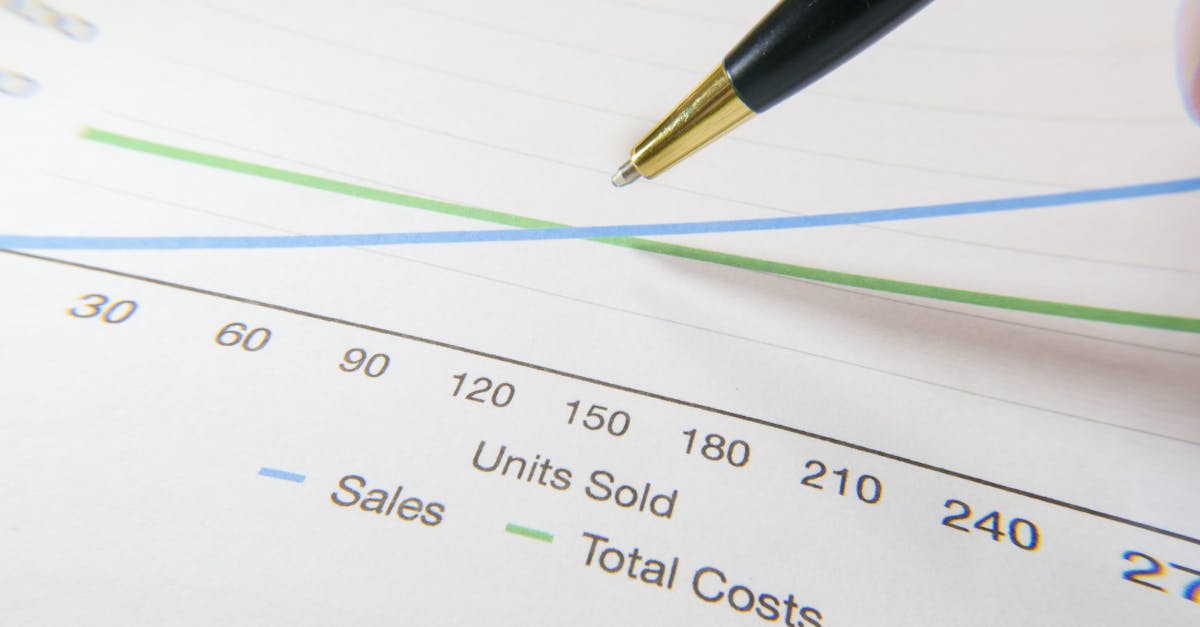Key Takeaways
- Streamlining sales pipeline processes improves efficiency, reduces bottlenecks, and boosts conversion rates by up to 28%.
- An efficient sales pipeline ensures better resource allocation, shorter sales cycles, and higher win rates.
- Automation tools like CRMs help eliminate repetitive tasks, enhance organization, and provide real-time visibility into the pipeline stages.
- Addressing common challenges such as poor communication and manual workflows can significantly improve overall team productivity.
- Tracking key metrics like conversion rates, lead-to-sale ratios, and sales cycle time helps identify weak points for targeted optimizations.
- A well-maintained pipeline not only drives revenue growth but also enhances customer experience through timely responses and effective engagement strategies.
Sales pipelines are the backbone of any successful business, yet inefficiencies can cost companies up to 30% in revenue potential. When our processes are cluttered or outdated, we risk losing valuable leads and slowing down conversions. Streamlining these workflows isn’t just about saving time—it’s about driving results that matter.
By refining how we manage each stage of the pipeline, we can boost efficiency while improving conversion rates. Studies show businesses with optimized sales processes see up to a 28% increase in win rates. It’s clear: a well-oiled sales pipeline doesn’t just improve performance; it transforms how we connect with prospects and close deals. Let’s explore how small adjustments can lead to big wins for our teams and bottom line.
Understanding Sales Pipeline Processes
Sales pipeline processes are crucial for driving efficiency and boosting conversion rates. By breaking down these processes, we can better identify areas that require improvement.
What Is a Sales Pipeline?
A sales pipeline represents the structured stages a prospect goes through before becoming a customer. It provides visibility into where each lead stands within the sales journey. Typically, it includes steps like lead generation, qualification, proposal submission, negotiation, and closing.
For example, imagine tracking leads as they move from initial contact to finalizing a deal—it’s like having a clear road map for your sales efforts. Each stage helps us focus on activities that push prospects closer to purchasing decisions. Tools such as Customer Relationship Management (CRM) systems simplify this by organizing data and automating repetitive tasks.
To visualize it better, think of an actual pipeline carrying water from one point to another without leaks or blockages. If there’s inefficiency at any step—like poorly qualified leads clogging the process—valuable resources get wasted. That’s why maintaining clarity and organization is vital in managing pipelines effectively.
Importance of an Efficient Sales Pipeline
An efficient sales pipeline directly impacts revenue growth and team productivity. It allows businesses to allocate resources wisely while reducing bottlenecks in the selling process. Companies with well-organized pipelines often see higher win rates because their teams work smarter rather than harder.
Consider how automated solutions can enhance this efficiency further—for instance, Field Service CRM tools streamline customer interactions by consolidating client details in one place. This reduces manual effort while improving follow-ups and response times. Additionally, digital platforms help track metrics like conversion ratios or average deal size, enabling data-driven decision-making.
Without an effective system in place, opportunities slip through cracks unnoticed or take longer than necessary to close deals—a scenario no business wants! Prioritizing pipeline optimization creates smoother workflows that benefit both teams and customers alike.
Challenges in Sales Pipeline Management
Managing a sales pipeline comes with several challenges that can hinder efficiency and lower conversion rates. Addressing these issues is critical for sustained business growth and better forecasting.
Common Bottlenecks in the Sales Process
Bottlenecks are often caused by poor communication, outdated tools, or inconsistent workflows. When deals stall at specific stages, it disrupts overall progress. For example, if leads remain stuck in the qualification phase due to unclear criteria or delayed follow-ups, it slows down conversions.
Another common issue is unbalanced resource allocation. Teams might focus too heavily on closing high-value deals while neglecting new leads. This approach creates gaps in the pipeline and reduces long-term opportunities. Additionally, insufficient reporting tools make it harder to spot where delays occur or which steps require improvement.
Teams also struggle when they rely on manual processes instead of automation. Automating repetitive tasks like data entry or email follow-ups minimizes errors and frees up time for meaningful customer interactions.
Impact of Inefficiencies on Conversion Rates
Inefficiencies directly impact conversion rates by creating friction at various stages of the pipeline. Poor visibility into lead status often results in missed opportunities because teams can't prioritize effectively. Without clear insights into active deals, it's challenging to predict outcomes accurately.
Pipeline stagnation further affects performance when leads aren't nurtured consistently due to lack of engagement strategies or automated reminders through tools like CRM systems.
A poorly structured pipeline can also overwhelm team members who spend more time troubleshooting than selling. This mismanagement not only wastes resources but demoralizes staff over time—leading to lower productivity and lost revenue potential.
Addressing inefficiencies with streamlined processes helps reduce these risks while boosting overall success metrics across sales operations.
Strategies for Streamlining Sales Pipeline Processes
Improving the sales pipeline involves addressing inefficiencies and adopting practices that boost productivity and conversion rates. Automation, organization, and communication play critical roles in achieving these goals.
Automating Repetitive Tasks
Automation reduces time spent on manual tasks, allowing teams to focus on selling. Key areas to automate include:
- Lead Scoring: AI tools analyze behavior and demographics to prioritize high-quality leads. For example, scoring systems highlight prospects most likely to convert based on engagement patterns.
- Follow-Up Emails: Automated email sequences maintain consistent communication with leads. Pre-scheduled emails nurture relationships without requiring constant input from team members.
- Meeting Scheduling: Tools simplify coordinating calls or demos by offering clients available slots directly linked to calendars.
- Data Entry: Automatic updates ensure customer records are accurate while reducing human error. This minimizes repetitive administrative work.
By automating these processes, sales reps can allocate more effort toward strategic activities like closing deals or building client relationships.
Implementing CRM Tools for Better Organization
A well-organized system improves pipeline visibility and data management. CRMs centralize customer interactions, providing real-time insights into every stage of the process.
- Pipeline Tracking: Visual dashboards display where each lead stands, making it easier to identify opportunities or bottlenecks.
- Task Management: Assigning follow-ups or reminders through a CRM keeps workflows structured and prevents missed deadlines.
- Integration Features: Many CRMs sync with other apps like invoicing software or email platforms for seamless operations.
Using a centralized platform fosters better oversight while reducing reliance on scattered spreadsheets or outdated methods.
Enhancing Communication and Collaboration Among Teams
Strong collaboration enhances performance across the pipeline. Clear communication between departments prevents errors and speeds up decision-making.
- Shared Platforms: Use tools accessible across teams to provide uniform access to relevant data about customers or deals.
- Defined Roles: Clarify responsibilities so everyone knows their part in moving leads forward efficiently.
- Regular Updates: Conduct brief check-ins focused on progress instead of lengthy meetings that disrupt workflows.
Encouraging transparency cultivates teamwork that drives results faster without confusion over who handles what task next.
Key Metrics to Track for Improved Performance
Optimizing sales pipelines starts with tracking the right metrics. These data points highlight areas needing improvement and guide decisions to improve efficiency and conversions.
Conversion Rate Analysis
Examining conversion rates at each pipeline stage reveals potential drop-off points. By calculating the percentage of prospects moving forward, we can identify weak spots in our process. For example, if only 10% of leads progress from marketing-qualified (MQL) to sales-qualified leads (SQL), this signals a need for better alignment between teams or improved lead targeting strategies.
Tracking specific segments also helps refine strategies. For instance, focusing on high-performing industries or demographics can yield higher returns than casting a wide net across all sectors. Aiming for an MQL-to-SQL conversion rate near 13%, as industry standards suggest, offers a benchmark to measure against and improve upon.
Sales Cycle Time
Measuring how long it takes to close deals is critical for evaluating efficiency. A shorter sales cycle often indicates streamlined processes and effective communication within the team and with prospects. If deals stall frequently at negotiation stages, revisiting pricing models or objection-handling techniques might reduce delays.
Automated tools like CRM systems simplify monitoring by providing timestamps for each stage transition. This data uncovers bottlenecks slowing momentum so we can address them directly. Reducing overall cycle time increases productivity since reps handle more opportunities within the same timeframe.
Lead-to-Sale Ratio
The lead-to-sale ratio shows how effectively initial inquiries convert into completed transactions. Tracking this metric highlights whether efforts focus on qualified leads rather than unproductive ones that consume resources without yielding results.
Improving qualification criteria boosts this ratio significantly. Utilizing automated scoring systems ensures only high-potential leads enter the pipeline while saving time spent on low-value prospects. Increasing this ratio not only improves sales figures but also enhances team morale by minimizing wasted effort on unlikely conversions.
Benefits of an Optimized Sales Pipeline
Optimizing a sales pipeline brings measurable improvements in efficiency, conversion rates, and customer satisfaction. Each benefit directly impacts productivity and revenue potential, creating streamlined processes that empower teams to perform better.
Improved Efficiency and Productivity
An optimized sales pipeline automates repetitive tasks like follow-up emails and lead scoring. This allows our sales team to focus on high-value activities such as closing deals or nurturing relationships. Tools like CRM systems help manage communication sequences without missing opportunities. For example, automated workflows can instantly notify reps about overdue follow-ups or key prospect updates, saving countless hours weekly.
Real-time identification of process bottlenecks removes obstacles before they disrupt progress. Addressing these issues early prevents delays at critical stages like proposal reviews or negotiations. With clear visibility into every stage of the pipeline, we can allocate resources more effectively and reduce wasted effort on unqualified leads. Standardizing actions across each phase creates repeatable workflows that scale smoothly as businesses grow, making operations seamless even during rapid expansion periods.
Higher Conversion Rates and Revenue Growth
A well-structured sales pipeline boosts conversion rates by keeping prospects engaged throughout their journey. By prioritizing qualified leads with data-driven insights from CRM tools, we direct efforts where they're most impactful rather than chasing poor-fit opportunities.
Shortened cycle times also mean faster decision-making for prospects who face fewer hurdles along the way—leading to quicker deal closures that contribute directly to revenue growth. Businesses using optimized pipelines often report win rate increases up to 28%, showing how structured processes translate into tangible results.
Analyzing metrics like MQL-to-SQL conversion rates helps us identify weak links within stages for targeted improvements over time. For instance, refining lead qualification criteria might improve this ratio significantly while reducing churn downstream.
Enhanced Customer Experience
Efficient pipelines not only streamline internal operations but also elevate customer experiences by delivering timely responses tailored precisely around prospect needs. Automation eliminates gaps between interactions so no question goes unanswered too long—a crucial factor when building trust during initial conversations.
Conclusion
Streamlining sales pipeline processes is more than just a strategy; it’s a necessity for driving sustainable growth. By addressing inefficiencies, leveraging automation, and fostering better collaboration, we can transform our pipelines into powerful tools that boost productivity and conversion rates.
Every adjustment we make—big or small—has the potential to enhance team performance and customer satisfaction. When we prioritize clarity, organization, and data-driven insights, we set the stage for consistent wins and long-term success. An optimized pipeline doesn’t just improve efficiency; it creates opportunities to maximize revenue while delivering exceptional value to our customers.
Frequently Asked Questions
What is a sales pipeline?
A sales pipeline is a visual representation of the structured stages prospects go through before becoming customers. These stages typically include lead generation, qualification, proposal submission, negotiation, and closing.
Why is optimizing the sales pipeline important?
Optimizing the sales pipeline helps improve efficiency, increase win rates by up to 28%, and reduce revenue losses caused by inefficiencies. It also streamlines workflows, enhances team productivity, and boosts customer satisfaction.
How do inefficiencies in the sales pipeline affect business performance?
Inefficiencies create bottlenecks that delay progress through the pipeline, leading to stalled deals and lower conversion rates. This can result in wasted resources and revenue losses of up to 30%.
What are common challenges in managing a sales pipeline?
Challenges include poor communication, outdated tools, inconsistent workflows, unbalanced resource allocation on high-value deals while neglecting new leads, and reliance on manual processes instead of automation.
How can automation improve sales pipelines?
Automation eliminates repetitive tasks like lead scoring or follow-up emails. It saves time for strategic activities while improving accuracy and consistency within the workflow.
What role does CRM software play in managing a sales pipeline?
CRM tools enhance organization by providing clear visibility into each stage of the process. They streamline task management, track progress efficiently, and enable data-driven decision-making.
Which metrics should I track to optimize my sales pipeline?
Key metrics include conversion rate analysis (e.g., MQL-to-SQL at around 13%), sales cycle length (shorter cycles indicate efficiency), and lead-to-sale ratio to measure inquiry-to-conversion effectiveness.
How can businesses address bottlenecks in their pipelines?
Identifying weak points using analytics tools like CRMs is key. Solutions involve automating manual tasks, improving communication across teams with shared platforms or defined roles, and reallocating resources wisely.
What are the benefits of an optimized sales pipeline?
An optimized pipeline improves efficiency by reducing delays; increases conversion rates; enhances customer satisfaction with timely responses; accelerates deal closures; boosts revenue growth; and allows teams to focus on strategic activities.
Can small adjustments significantly impact my sales results?
Yes! Even minor changes—like refining qualification criteria or implementing automated tools—can reduce inefficiencies drastically. Such improvements often translate into measurable success across all operations.






